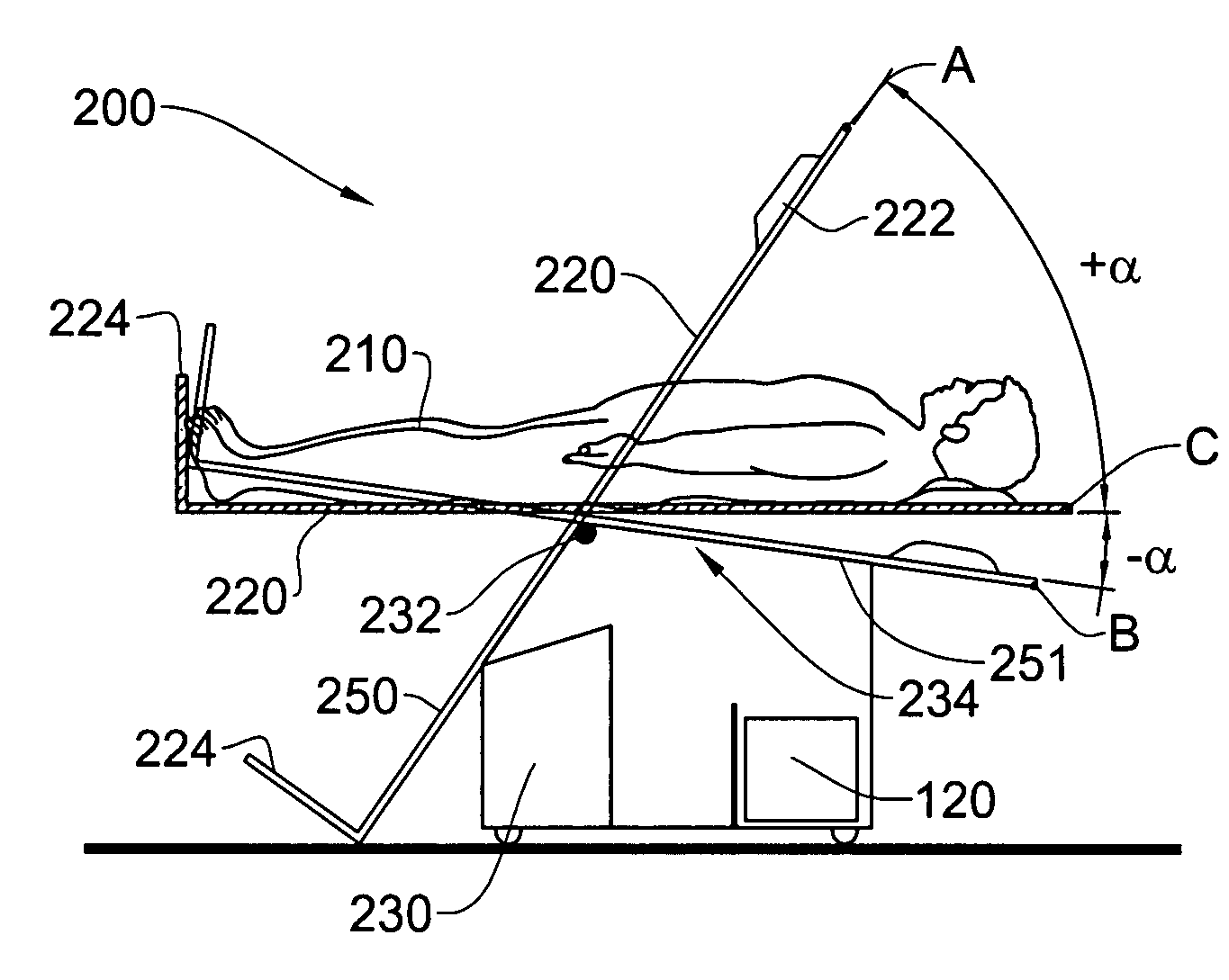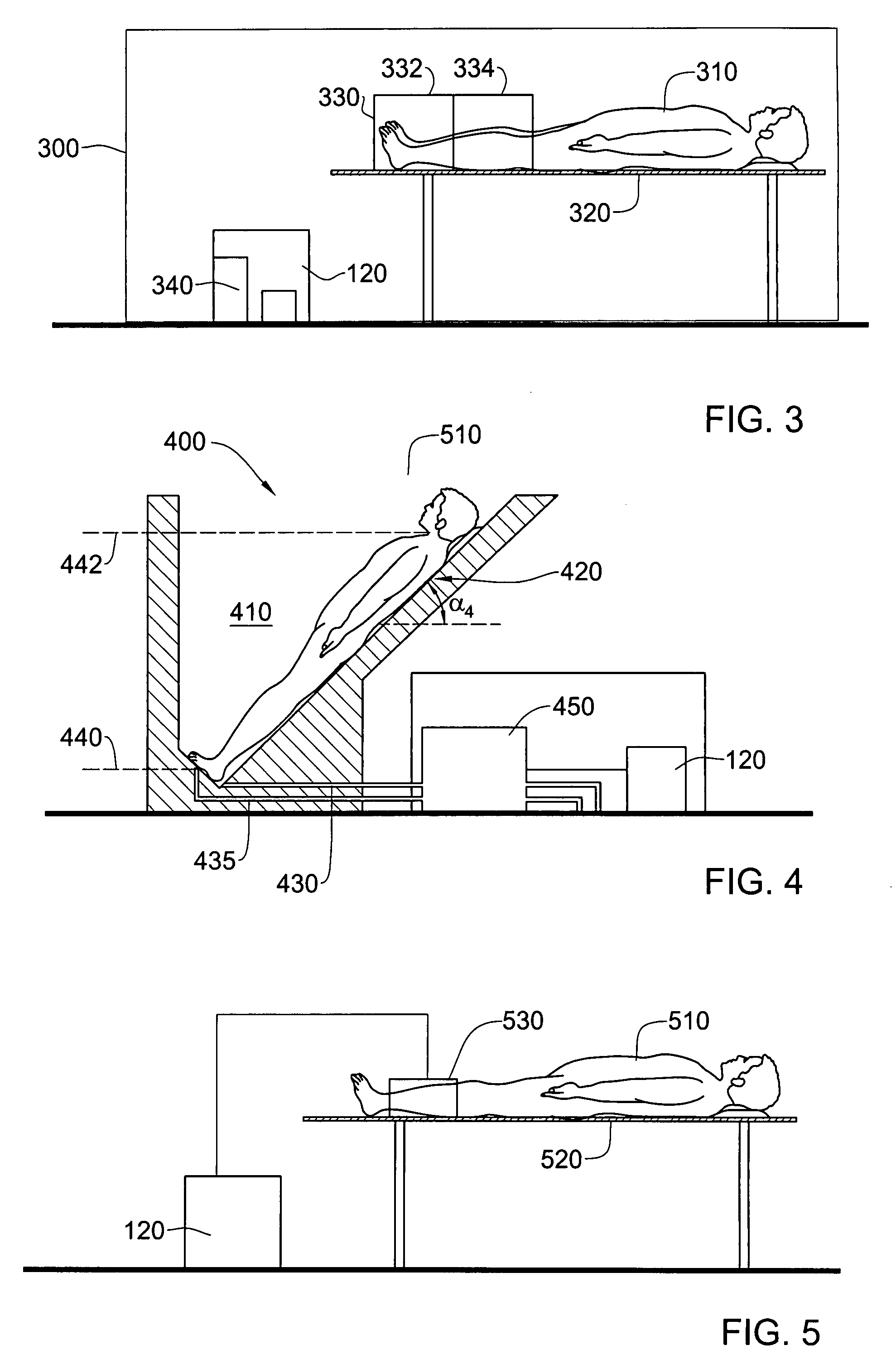System and method for cardiovascular treatment or training
a cardiovascular treatment and training technology, applied in the field of medical devices, can solve the problems of increasing venous return, increasing the risk of cardiovascular disease, and the change in the heart rate associated with this local and quasi-instantaneous mechano-electrical phenomenon cannot be completely controlled, so as to minimize voluntary and emotional involvement, the effect of avoiding any correlation between the heart and the heart ra
- Summary
- Abstract
- Description
- Claims
- Application Information
AI Technical Summary
Benefits of technology
Problems solved by technology
Method used
Image
Examples
second embodiment
[0078]FIG. 2b shows a venous return device 201 in accordance with a second embodiment for use in the invention. The venous return device 201 includes a surface 220, which may be a bed or table, on which the subject 210 lies. The surface 221 has a first tiltable portion 250a and a second tiltable portion 250b, generally limited to the left leg region, and the right leg region, respectively of the subject. A motor 230 under the control of the CPU 120 is used to change the tilt of the tiltable portions 250 with respect to the horizontal. Each horizontal portion 250 may controlled individually, or both horizontal portions 250 may be activated in unison. Shifting the position of one or both the legs changes in venous return.
[0079]FIG. 3 shows a venous return device 300 for use in the system 100 in accordance with yet another embodiment of the invention. In the device 300, a pneumatic chamber or sleeve 330 serves as a venous return device. The pneumatic chamber 330 covers at least a porti...
embodiment 1100
[0095]FIG. 11 shows an embodiment 1100 of the system 100 for cardiovascular treatment or training. The system 1100 is shown in a right side view FIG. 11a, in a top view in FIG. 11b, and in a view from above in FIG. 11c. The system 1100 includes as the venous return device 150 the venous return device 200 shown in FIG. 2a. The system 1100 also includes as the heart rate device 160 the device 800 shown in FIG. 8a as well as the heart rate device 1000 shown in FIG. 10.
[0096]FIG. 11c also shows the two compression pads 1010 of the heart rate device 1000
[0097]Each compression pad 1010 is fixed to a rigid support 1162 composed of two pieces. The support 1162 has an upper horizontal piece, capable of pivoting around an axis 1164 that can be fixed in the required position by a knob 1166, and a vertical displacement knob 1168 which can also be moved in a lateral direction for adjusting the pressure of the compression pads on the subject's chest.
[0098]The system 1100 also includes the screen ...
PUM
 Login to View More
Login to View More Abstract
Description
Claims
Application Information
 Login to View More
Login to View More - R&D
- Intellectual Property
- Life Sciences
- Materials
- Tech Scout
- Unparalleled Data Quality
- Higher Quality Content
- 60% Fewer Hallucinations
Browse by: Latest US Patents, China's latest patents, Technical Efficacy Thesaurus, Application Domain, Technology Topic, Popular Technical Reports.
© 2025 PatSnap. All rights reserved.Legal|Privacy policy|Modern Slavery Act Transparency Statement|Sitemap|About US| Contact US: help@patsnap.com



